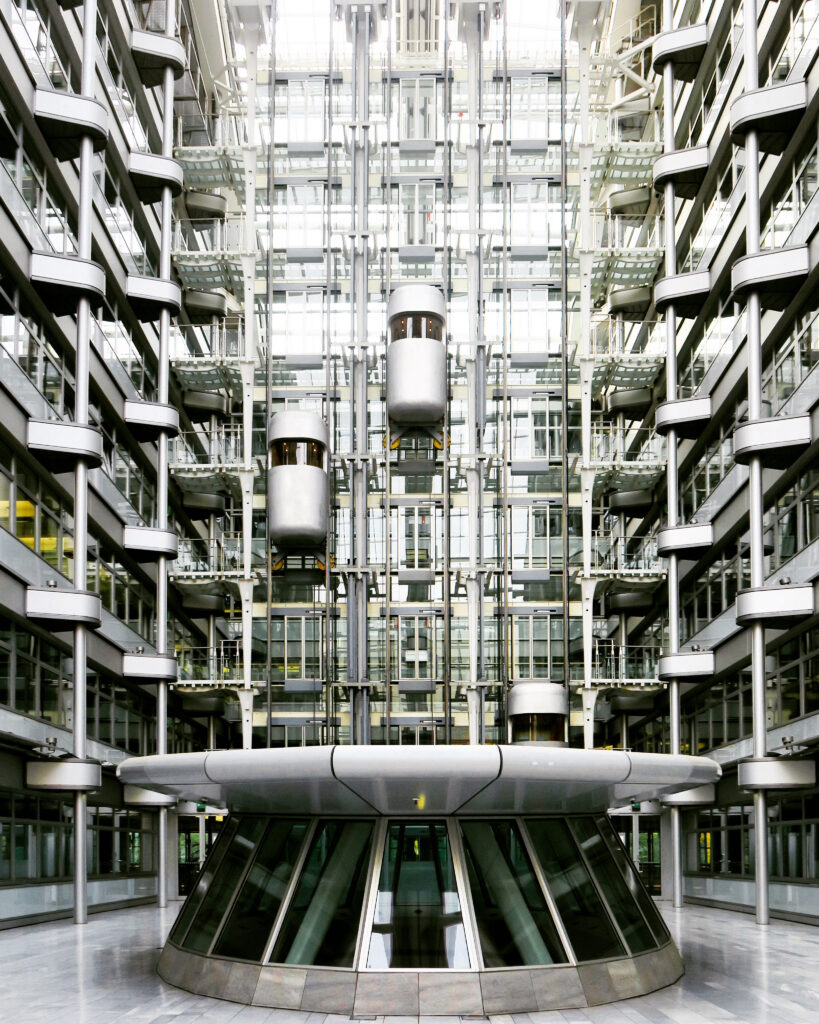As the world slowly recovers from the COVID-19 pandemic, airports are diligently working to ensure the safety and well-being of travelers. From enhanced cleaning protocols to innovative technology, airports are taking proactive steps to instill confidence in travelers as they embark on their journeys. Implementing measures such as increased sanitization, social distancing markers, and mandatory mask policies, airports are creating a secure environment for passengers to navigate. This article explores the various safety measures airports are implementing to adapt to the new normal of post-pandemic travel.
1. Temperature screenings and health checks
As airports prioritize the health and safety of passengers and staff, temperature screenings and health checks have become an essential part of post-pandemic travel protocols. These measures aim to identify individuals who may be symptomatic or have an elevated body temperature, which could be a sign of illness.
1.1 Thermal imaging cameras
One of the technologies being utilized in airports is thermal imaging cameras. These cameras employ infrared technology to measure the body temperature of individuals passing through designated areas. By capturing the heat signatures emitted by the body, thermal imaging cameras can quickly identify individuals exhibiting high temperatures. This allows airport authorities to take appropriate action and provide further medical assessments if necessary.
1.2 Non-contact temperature measurement devices
Non-contact temperature measurement devices are also being employed to screen passengers and staff efficiently. These devices use infrared sensors to measure body temperature without the need for physical contact. They can be handheld or mounted on stands, enabling individuals to walk past them while the device measures their temperature. This method minimizes contact and speeds up the screening process, enhancing overall operational efficiency.
1.3 Health questionnaires
Health questionnaires have become a common practice in airports. Travelers are required to answer a set of questions regarding their health, recent travel history, and potential exposure to COVID-19. These questionnaires provide valuable information to airport authorities and healthcare professionals, helping them identify individuals who may require further examination or quarantine measures. The data collected through health questionnaires aids in contact tracing efforts and assists in containing potential outbreaks.
2. Enhanced cleaning and disinfection
To ensure a clean and safe environment, airports have significantly increased their cleaning and disinfection efforts, focusing on high-touch surfaces and commonly used areas.
2.1 Increased frequency of cleaning
A key aspect of enhanced cleaning protocols is the increased frequency of cleaning. Airports have implemented more frequent cleaning schedules to ensure that surfaces are regularly disinfected. Frequently touched surfaces such as handrails, elevator buttons, and restroom facilities are now cleaned and disinfected multiple times a day. This proactive approach minimizes the risk of contamination and provides peace of mind to passengers and staff.
2.2 Use of disinfectant fogging
To complement regular cleaning procedures, airports have started incorporating disinfectant fogging. This technique involves using specialized equipment to disperse disinfectant as a fine mist throughout the airport premises. Disinfectant fogging allows for thorough coverage of large areas, including seating areas, waiting halls, and baggage claim areas. The fog settles on surfaces, eliminating bacteria and viruses, and provides longer-lasting protection against potential pathogens.
2.3 Focus on high-touch surfaces
High-touch surfaces, such as touchscreens, check-in counters, and security trays, receive meticulous attention in airports’ cleaning protocols. Enhanced cleaning practices include wiping down these surfaces regularly with disinfectant solutions. Additionally, some airports have started implementing antimicrobial coatings on high-touch surfaces to provide ongoing protection against bacteria and viruses, minimizing the risk of transmission for all individuals passing through the airport.

This image is property of images.pexels.com.
3. Social distancing
Social distancing measures play a crucial role in mitigating the spread of infectious diseases. Airports have implemented various strategies to ensure passengers and staff maintain a safe distance from one another.
3.1 Floor markings and signage
To facilitate social distancing, airports have placed floor markings and signage throughout terminal buildings. These indicators remind individuals to maintain a minimum distance of six feet from others. Floor markings are particularly helpful in areas where passengers tend to queue, such as check-in counters, security checkpoints, and boarding gates. Clear and visible signage ensures that social distancing guidelines are understood and followed by all.
3.2 Queue management
Queue management is an essential aspect of enforcing social distancing in airports. To avoid overcrowding and maintain a safe distance between individuals, airports have introduced measures such as staggered boarding and deboarding processes. Passengers are called to board in smaller groups, preventing congestion in boarding areas and reducing the likelihood of close contact. Queue management systems also help regulate passenger flow and ensure a smooth and organized travel experience.
3.3 Reduced seating capacity
Airports have also taken steps to reduce seating capacity in waiting areas and lounges to uphold social distancing measures. Seats and chairs have been rearranged or marked as unavailable to maintain physical distance between passengers. By limiting the number of individuals occupying seating areas, airports create a safer environment, reducing the risk of close contact between travelers.
4. Protective barriers and personal protective equipment (PPE)
Implementing protective barriers and providing personal protective equipment (PPE) is crucial for safeguarding both airport staff and passengers.
4.1 Plexiglass barriers at check-in counters and security checkpoints
To create a physical barrier between staff and passengers, airports have installed transparent plexiglass barriers at check-in counters and security checkpoints. These barriers protect both parties during face-to-face interactions, minimizing the risk of airborne transmission of viruses. By providing a shield between employees and travelers, airports enhance safety and instill confidence in those utilizing their services.
4.2 PPE for airport staff and passengers
The utilization of personal protective equipment (PPE) is another fundamental safety measure airports have implemented. Airport staff, including security personnel and cleaning crews, are required to wear appropriate PPE, such as masks and gloves, to protect themselves and others. Likewise, passengers are encouraged or even mandated to wear face masks throughout their airport journey. The combination of staff and passenger PPE usage contributes to a safer environment and reduces the risk of spreading infectious diseases.
4.3 Hand sanitizer stations
Hand hygiene is a crucial part of preventing the spread of diseases, including COVID-19. Airports have installed numerous hand sanitizer stations throughout their facilities to promote frequent hand sanitization. These stations are strategically placed near high-traffic areas, including entrances, exits, security checkpoints, and boarding gates. Accessible hand sanitizer encourages individuals to cleanse their hands regularly, reducing the spread of germs and maintaining a hygienic environment for all.

This image is property of images.pexels.com.
5. Contactless technology and automation
To minimize physical contact and streamline processes, airports have embraced contactless technology and automation.
5.1 Touchless check-in and boarding procedures
Passengers can now experience touchless check-in and boarding procedures at many airports. Self-service kiosks, mobile apps, and online check-in options allow individuals to complete necessary procedures without physical contact with airport staff or equipment. Boarding passes can be scanned directly from mobile devices, reducing the need for paper documents or touching shared surfaces. By implementing touchless solutions, airports enhance efficiency and ensure a seamless travel experience, all while minimizing contact points.
5.2 Automated security screening processes
Automated security screening processes have also become prevalent in airports. Technologies such as advanced imaging scanners and automated tray return systems reduce the need for manual intervention during security checks. These systems allow passengers to pass through security checkpoints smoothly and efficiently, minimizing the amount of physical interaction required. By optimizing security processes, airports balance safety protocols and passenger convenience.
5.3 Mobile apps for contactless transactions
Mobile apps have emerged as an essential tool for contactless transactions at airports. Travelers can use mobile apps to access digital boarding passes, make purchases at restaurants or retail stores, and receive real-time updates on flight information. By enabling contactless payments and reducing the need for physical tickets or cash transactions, mobile apps contribute to a safer and more hygienic airport environment, providing a convenient and secure platform for passengers.
6. Improved air filtration and ventilation
Recognizing the importance of clean air in preventing the spread of airborne illnesses, airports have implemented measures to improve air filtration and ventilation systems.
6.1 High-efficiency air filters
Airports have upgraded their air filtration systems to incorporate high-efficiency particulate air (HEPA) filters. These filters are designed to capture a high percentage of airborne particles, including bacteria and viruses. By using HEPA filters, airports ensure that the air circulating within terminal buildings is continually cleaned and purified, reducing the risk of airborne transmission of infectious diseases.
6.2 Increased fresh air circulation
To enhance air quality further, airports have increased the circulation of fresh air throughout their facilities. Ensuring a constant flow of fresh air reduces the concentration of airborne contaminants and promotes the overall health and well-being of individuals within the airport. Improved ventilation systems help maintain a comfortable and healthy environment for both passengers and staff.
6.3 UV disinfection systems
Some airports have incorporated ultraviolet (UV) disinfection systems into their air conditioning and ventilation systems. UV light has been proven to effectively kill bacteria and viruses, including the coronavirus. By integrating UV disinfection systems, airports provide an additional layer of protection against airborne pathogens, further safeguarding individuals within the airport premises.

This image is property of images.pexels.com.
7. Health and safety education
Airport authorities recognize the importance of educating passengers and staff about health and safety protocols. Various initiatives have been implemented to ensure that individuals are well-informed and empowered to protect themselves and others.
7.1 Informational posters and signage
Airports display informational posters and signage throughout their facilities to communicate important health and safety guidelines. These materials provide clear instructions on hand hygiene, social distancing practices, and the proper use of face masks. By having visual reminders easily accessible to all individuals, airports ensure that passengers and staff are continuously reminded of the necessary precautions to be taken.
7.2 Awareness campaigns and announcements
To reinforce health and safety practices, airports conduct awareness campaigns and make regular announcements. These campaigns typically focus on reminding individuals about the importance of hand hygiene, wearing face masks, and practicing social distancing. By communicating important information audibly, airports create a heightened sense of awareness and encourage compliance with safety protocols, promoting a safer environment for all.
7.3 Passenger education materials
Passenger education materials, such as brochures and digital content, are distributed or made available for download to inform travelers about health and safety protocols. These materials outline the specific measures being implemented by the airport and provide guidance on how passengers can actively participate in creating a safe travel environment. By educating individuals about their responsibility in adhering to safety measures, airports ensure collective efforts towards a healthier and more secure travel experience.
8. Enhanced monitoring and surveillance
Airports have embraced advanced monitoring and surveillance technologies to closely track passenger flow and identify potential risks.
8.1 Real-time monitoring of passenger flow
Real-time monitoring systems help airport authorities track passenger flow within terminal buildings. By analyzing data from surveillance cameras and sensors, airports can identify crowded areas and take proactive measures to disperse individuals or redirect traffic. This technology enables airports to adjust resources and implement crowd management strategies effectively, ensuring social distancing guidelines are maintained throughout high-traffic areas.
8.2 Contact tracing and tracking technologies
Contact tracing and tracking technologies have proved invaluable in airports’ efforts to prevent the spread of COVID-19. Some airports have introduced mobile applications or wearable devices that enable contact tracing and monitoring of individuals’ movements within the airport premises. In the event of a confirmed case, these technologies provide vital information for contact tracing purposes, allowing for efficient identification and testing of potentially exposed individuals.
8.3 Security cameras and sensors
Enhanced security cameras and sensors complement the monitoring and surveillance systems employed within airports. These technologies aid in the detection of potential security threats and assist in ensuring compliance with safety measures. By monitoring areas prone to overcrowding or non-compliance, airport security teams can promptly intervene and take appropriate actions to address any issues that may compromise the safety and well-being of those within the airport.
9. Collaboration with airlines and authorities
To establish cohesive safety protocols and optimize the effectiveness of measures, airports actively collaborate with airlines and relevant authorities.
9.1 Coordination of safety protocols
Airports work closely with airlines to align safety protocols and ensure consistency across all aspects of the travel experience. This collaboration involves discussing, implementing, and communicating health and safety guidelines and measures. By coordinating efforts, airports and airlines can effectively safeguard passengers, facilitate safe travel, and provide a seamless and coordinated experience from the moment travelers arrive at the airport until they reach their destinations.
9.2 Sharing of health data
Sharing health data is essential for airports to maintain a comprehensive understanding of potential health risks and trends. Airports collaborate with health agencies and authorities to exchange relevant information, including testing results, contact tracing data, and updates on local and international health guidelines. This data sharing enables airports to tailor their safety measures accordingly, ensuring a proactive and informed approach to managing public health on airport premises.
9.3 Joint training programs
To enhance coordination and readiness, airports engage in joint training programs with airlines, airport staff, and relevant authorities. These training programs focus on familiarizing individuals with safety protocols, identifying potential risks, and preparing for various scenarios. By training together, airports and airlines can create a unified and responsive approach to managing health and safety situations, ensuring that staff are well-prepared to handle emergencies and maintain a secure environment for all.
10. Constant review and improvement
Airports consistently evaluate the effectiveness of their safety measures and actively seek feedback from passengers and staff to identify areas for improvement.
10.1 Regular evaluation of safety measures
Airports conduct regular evaluations of their safety measures to assess their effectiveness and identify any gaps or areas in need of improvement. This evaluation includes analyzing data, reviewing feedback, and staying updated on global health guidelines. By performing regular assessments, airports can adapt and enhance their safety protocols to align with evolving circumstances and emerging best practices.
10.2 Feedback collection from passengers
Passenger feedback serves as a valuable source of information for airports to gauge satisfaction and identify areas for improvement. Airports actively seek feedback through various channels, such as online surveys, suggestion boxes, and dedicated customer service desks. By gathering feedback from passengers, airports gain insights into the effectiveness of their safety measures and can make necessary adjustments to enhance the overall travel experience.
10.3 Implementation of innovative solutions
Airports are committed to staying at the forefront of innovation, embracing emerging technologies and solutions that enhance safety and efficiency. By partnering with technology providers and conducting research and development initiatives, airports continuously explore innovative approaches to address health and safety challenges. From testing new disinfection methods to pilot-testing contactless biometrics, airports invest in cutting-edge solutions that exceed industry standards and pave the way for a safer future of air travel.

Welcome to Triple Star News! I am your Editor, your go-to source for staying informed and up to date on a wide array of themes and topics. My dedicated team of journalists and reporters works tirelessly to bring you timely and comprehensive news coverage that caters to your diverse interests and curiosities. From current events and politics to technology, entertainment, health, and beyond, I’ve got you covered. I pride myself on delivering information in a clear, concise, and engaging manner, accessible to readers of all backgrounds. Join me on Triple Star News and embark on a journey of discovery, staying informed, and expanding your horizons. Let the world unfold before your eyes.


